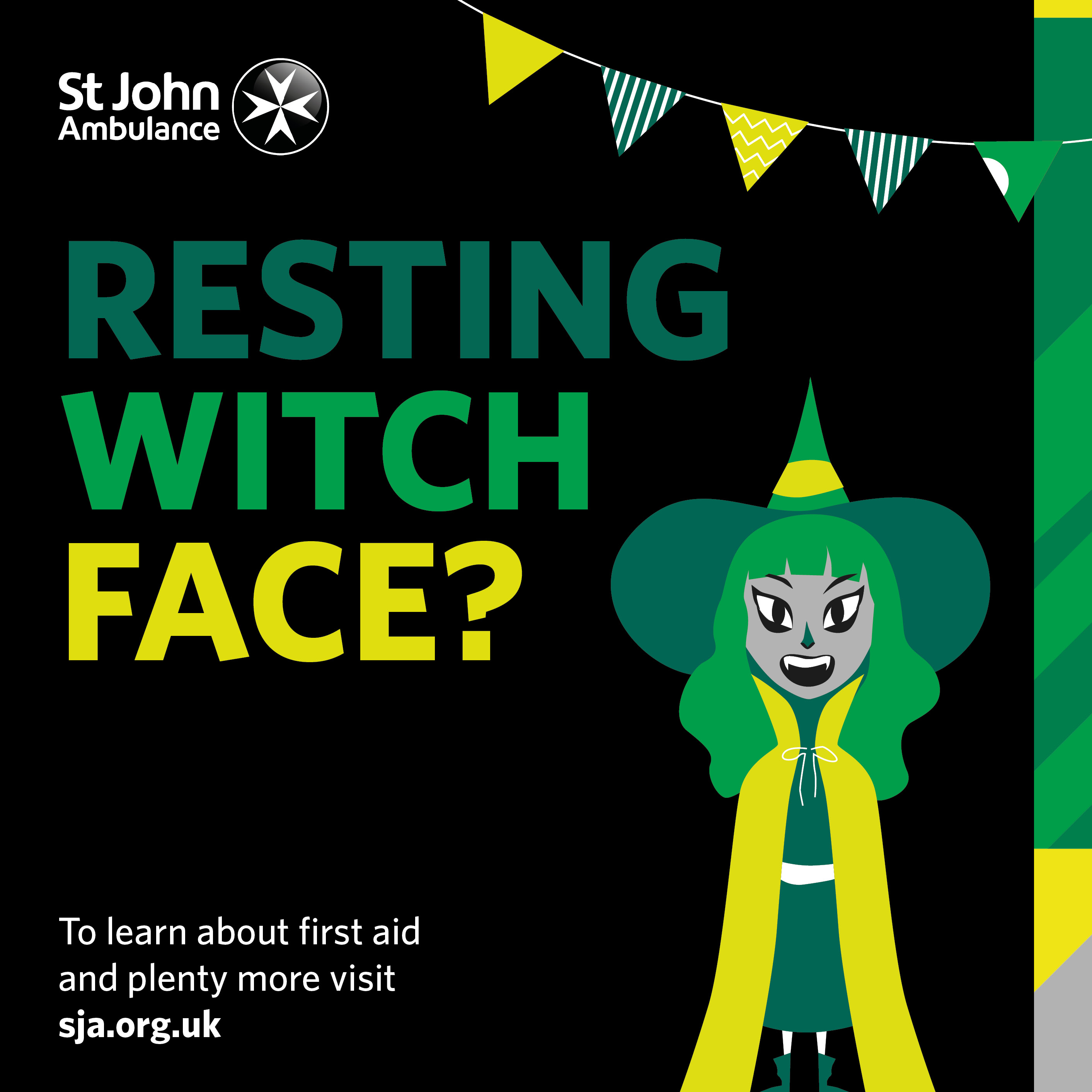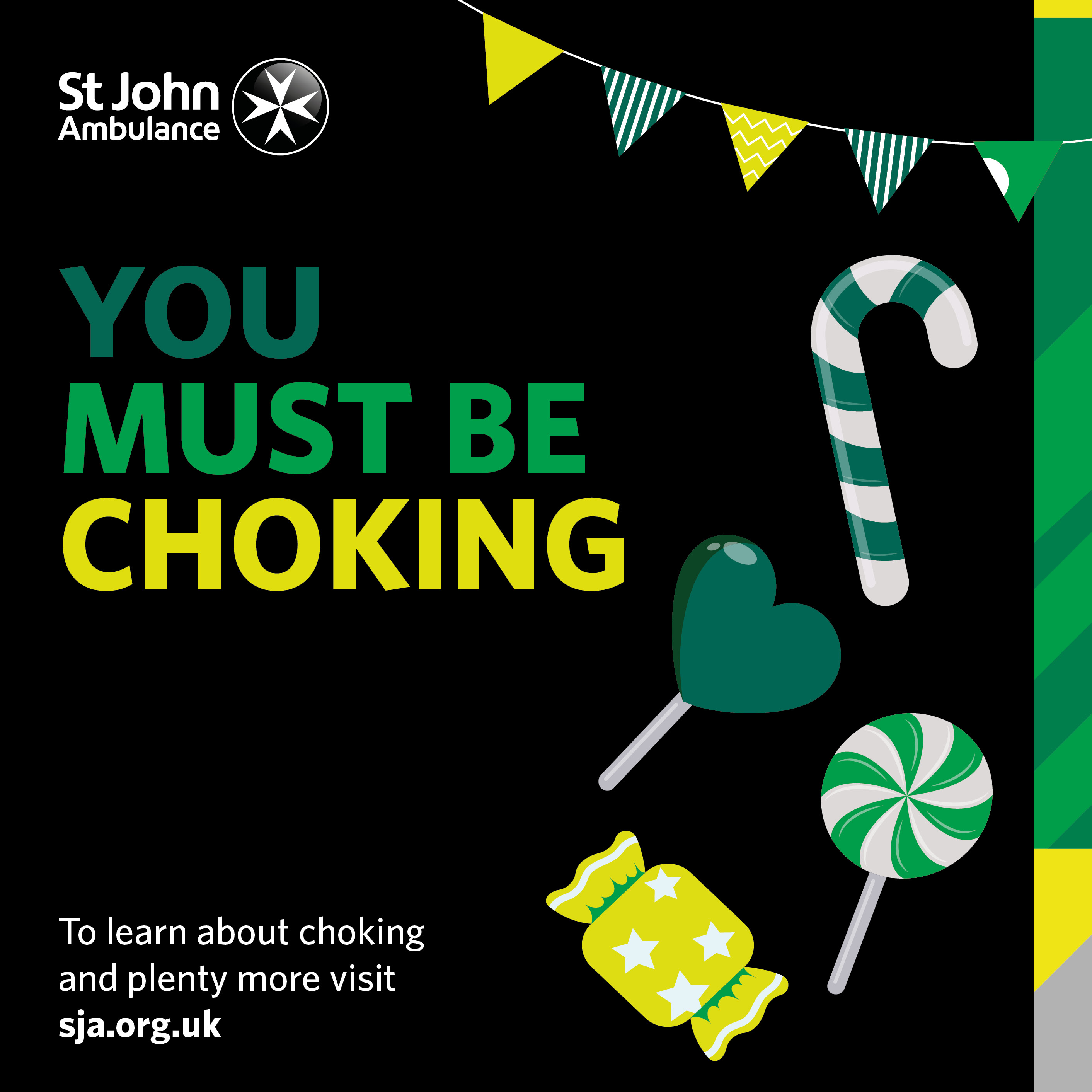Friday October 29, 2021: St John Ambulance has top first aid tips to give you pumpkin to think about and ensure that you are not caught off gourd this Halloween.

The charity’s social media accounts have been possessed by the tormented spirits of people who don’t get out much and will be filled with helpful advice for the next three days.
St John Ambulance’s Medical Director, Dr Lynn Thomas says: “It’s one thing to dress up like something from a horror movie but quite another to end up in a terrifying situation where you’re sick or injured. Nobody wants A&E to look like a scene from The Walking Dead or Scream on Halloween - all the fake blood and gore just gets confusing.
“Our social media posts, complete with ghastly gags, creepy cartoons and petrifying plays on words, are a fun way of giving first aid advice and helping people enjoy the spooky festivities safely.”
Now, is that hideous noise the sound of you groaning at our terrible jokes, or the armies of the undead shuffling slowly towards your front door…?
While you hide behind a cushion, here’s some useful first aid advice to keep Halloween all treats and no tricks…
How to raise the dead
- If you find someone collapsed, you should first perform a Primary Survey. If you have established from the primary survey that they are unresponsive and not breathing, you should ask a helper to call 999 or 112 for emergency help while you start cardiopulmonary resuscitation (CPR). Ask a helper to find and bring a defibrillator, if available. If you are on your own call 999 or 112 and put your phone on speaker phone.
- Put a light cover or face covering over the patients mouth before you start CPR. Kneel by the casualty and put the heel of your hand in the middle of their chest, put your other hand on top of the first. Interlock your fingers making sure they don't touch the ribs. Keep your arms straight and lean over the casualty. Press down hard, to a depth of about 5-6cm before releasing the pressure, allowing the chest to come back up.
- Repeat the compressions 30 times; at a rate of 100-120 compressions per minute.
- When the helper returns with a defibrillator, ask them to switch it on and take the pads out while you continue with CPR. They should remove or cut through clothing to expose the chest and wipe away any sweat.
- They should attach the pads to the casualty’s chest by removing the backing paper. Applying the pads in the positions shown.
- The defibrillator will analyse the heart's rhythm. It will tell you to stop CPR and make sure no one is touching the casualty. It will then give a series of visual and verbal prompts that should be followed.
- If the casualty shows signs of becoming responsive such as coughing or opening eyes, speaking, and starts to breathe normally, put them in the recovery position. Leave the defibrillator attached. Monitor their level of response and prepare to give CPR again if necessary.
Be like a mummy and keep it under wraps
- With open wounds, there’s a risk of infection, so wear gloves (if you can) to help prevent any infection passing between you both.
- Apply direct pressure to the wound using a sterile dressing if possible or a clean non-fluffy cloth, to stop the bleeding.
- Ask a helper to call 999 or 112 for emergency help and give ambulance control details of where the wound is and the extent of the bleeding.
- Firmly secure the dressing with a bandage to maintain pressure on the wound. Make it firm enough to maintain pressure but not so tight that it restricts their circulation.
- Check their circulation beyond the bandage. To do this, press one of the nails or the skin beyond the bandage for five seconds until it turns pale, then release the pressure. If the colour does not return within two seconds, the bandage is too tight. If necessary, loosen and reapply the bandage.
- The loss of blood could cause the casualty to develop shock. Treat them for shock by helping them to lie down, on a rug or blanket. Raise and support their legs so that they are above the level of their heart. You should then loosen any tight clothing around their neck, chest and waist and cover the casualty with a blanket to keep them warm.
- If blood loss persists, remove the dressing and reapply direct pressure over a new dressing or pad to control the bleeding. Secure the dressing with a bandage once bleeding is controlled; tie the knot over the pad to help maintain pressure.
- Support the injured part with a sling or bandage and keep checking the circulation beyond the bandage every 10 minutes.
- Keep monitoring their level of response until help arrives. If they become unresponsive at any point, prepare to start CPR.
Choke-us Pocus!

- If you think someone is choking, ask them ‘Are you choking?' If they can breathe, speak or cough then they might be able to clear their own throat. If they cannot breathe, cough, or make any noise, then they need your help straight away
- Cough it out. Encourage them to cough and remove any obvious obstruction from their mouth
- Slap it out. If coughing fails to work, you need to give five sharp back blows. To do this, help them to lean forwards, supporting their upper body with one hand. With the heel of your other hand give them five sharp back blows between their shoulder blades. After each back blow, check to see if there’s anything in their mouth
- Squeeze it out. If back blows fail to clear the obstruction, give five abdominal thrusts. To do this, stand behind them and put your arms around their waist. Place one hand in a clenched fist between their belly button and the bottom of their chest. With your other hand, grasp your fist and pull sharply inwards and upwards up to five times. Check their mouth again, each time
- If the blockage has not cleared, call 999 or 112 for emergency help straight away. Repeat 5 back blows and 5 abdominal thrusts until help arrives, re-checking their mouth each time. Be prepared to start CPR if the patient becomes unresponsive.

